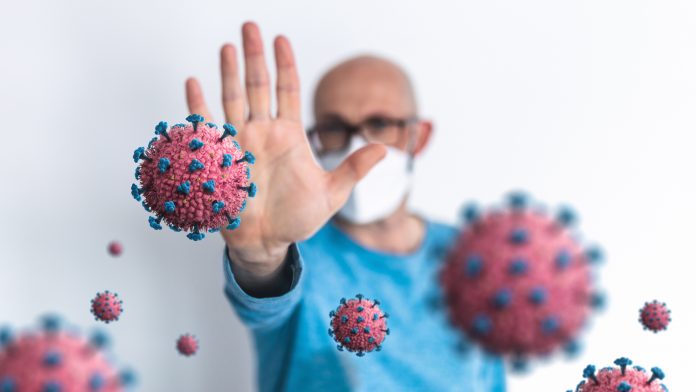
In a groundbreaking development toward eradicating Covid transmission, a team of experts has designed a new wearable technology that examines the user’s air exposure to SARS-CoV-2.
This significant advancement, achieved by a research team from the American Chemical Society, may potentially change the trajectory of the pandemic, effectively reducing Covid transmission. The novel wearable technology is a passive air sampler that expertly analyses personal exposure to SARS-CoV-2, a tool that may be especially beneficial for people who work in high-risk settings, such as health care facilities and restaurants.
The full findings of the team’s research project are published in ACS’ Environmental Science & Technology Letters. The endeavour was made possible due to funding financed by the National Science Foundation and the Rothberg Fund.
Covid transmission prevention
SARS-CoV-2 is predominantly spread through the inhalation of Covid-contaminated aerosols and respiratory droplets that are disseminated when people infected with the virus cough, sneeze, speak or breathe.
An array of protective equipment and practices have been adopted around the world during the pandemic to reduce the spread of the deadly disease. The implementation of face masks, social distancing, increased sanitation, and ventilation have aided in mitigating Covid transmission in public places.
Despite this, scientists have still detected airborne SARS-CoV-2 in indoor settings, suggesting more robust technology is essential to assess a person’s risk of contracting the disease. Moreover, with novel variants, such as Delta and Omicron, emerging regularly and each more transmissible than the last, the newly developed wearable air sampler may provide an effective weapon against the virus.
A milestone for wearable technology
Previously, scientists have employed active air sampling devices to detect airborne SARS-CoV-2 in indoor settings; however, this technology was not suitable for commercial use because these monitors are expensive, too large, non-portable, and require electricity.
To make this technology applicable for every day, personal use, the research team, led by Krystal Pollitt, set about creating a small, lightweight, inexpensive, and wearable device that isn’t bound to a power source.
The result of their endeavour is a wearable passive air sampler – known as the Fresh Air Clip – which works by absorbing virus-laden aerosols on a polydimethylsiloxane (PDMS) surface. The researchers tested their air sampler in a rotating drum in which they generated aerosols comprised of a surrogate virus, a bacteriophage with similar properties to SARS-CoV-2.
The team detected the virus on the PDMS sampler using the polymerase chain reaction (PCR), signifying that the device can be reliably utilised to quantify airborne virus concentrations and the chances of Covid transmission.
Next, the researchers distributed the fresh Air Clips to 62 volunteers who wore the monitors for five days. PCR analysis of the clips detected SARS-CoV-2 RNA in five of the clips; four were worn by restaurant workers and one by a person who worked in a homeless shelter. The highest viral loads (more than 100 RNA copies per clip) were identified in two badges from restaurant servers.
Despite the Fresh Air Clip not being commercialised yet, the research suggests that it could be used as a semiquantitative screening tool that people can employ to monitor their exposure to SARS-CoV-2, in addition to locating high-risk areas for Covid transmission.










